The Mekong River - Definition, Examples, Quiz, FAQ, Trivia
Discover Southeast Asia's life-giving river system
What is the Mekong River?
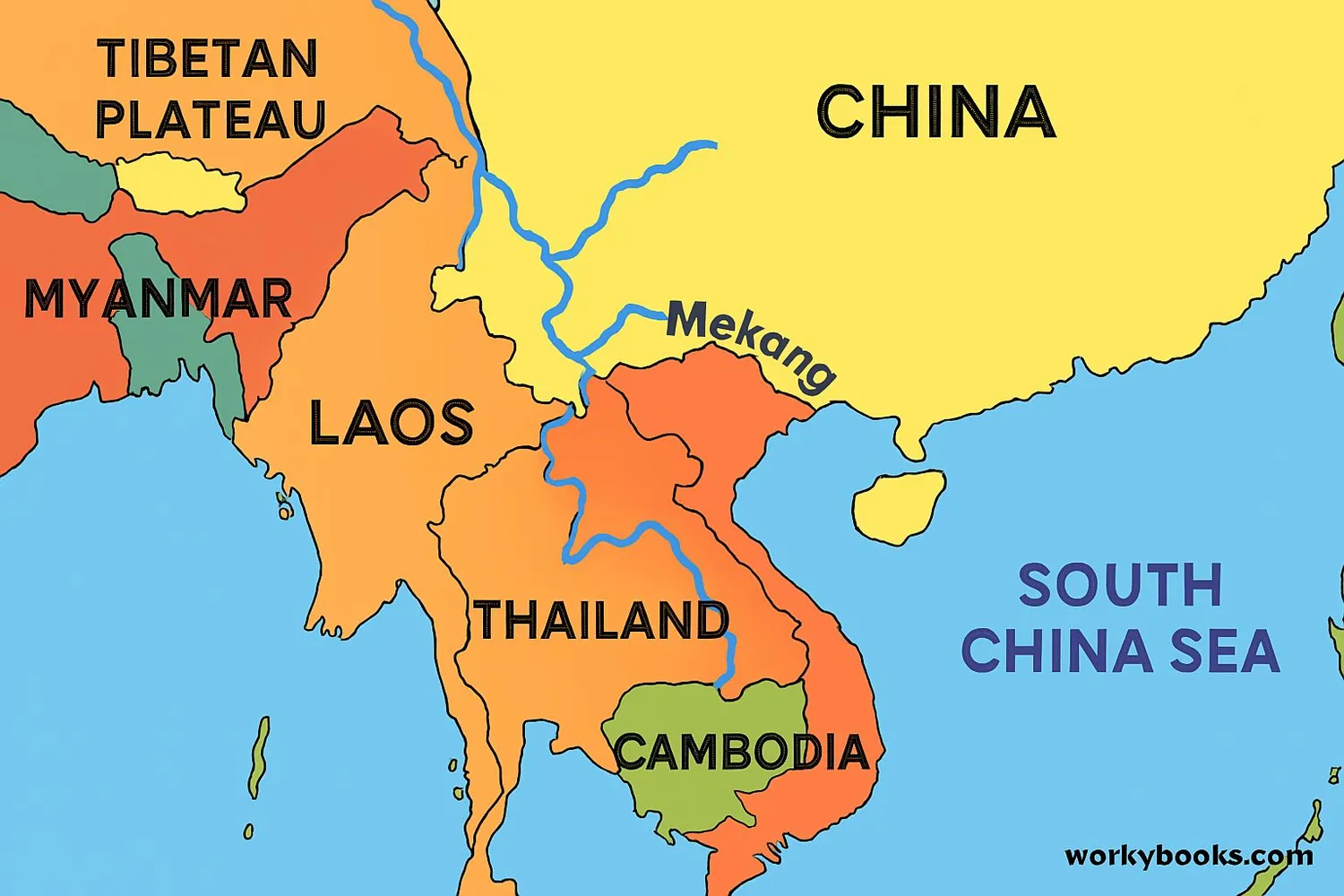
The Mekong River is one of the world's great rivers! It flows through six countries in Southeast Asia:
China, Myanmar, Laos, Thailand, Cambodia, and Vietnam.
Here are some key facts about the Mekong:
- Length: Approximately 4,350 km (2,700 miles) - the 12th longest river in the world
- Source: Begins high in the Tibetan Plateau at over 5,000 meters (16,400 feet) elevation
- Name: Called Lancang River in China, Mekong River in Southeast Asia
- Importance: Supports over 60 million people who depend on it for food, water, and transportation
River Fact!
The Mekong River basin covers an area of 795,000 km² - that's larger than the state of Texas!
The River's Journey
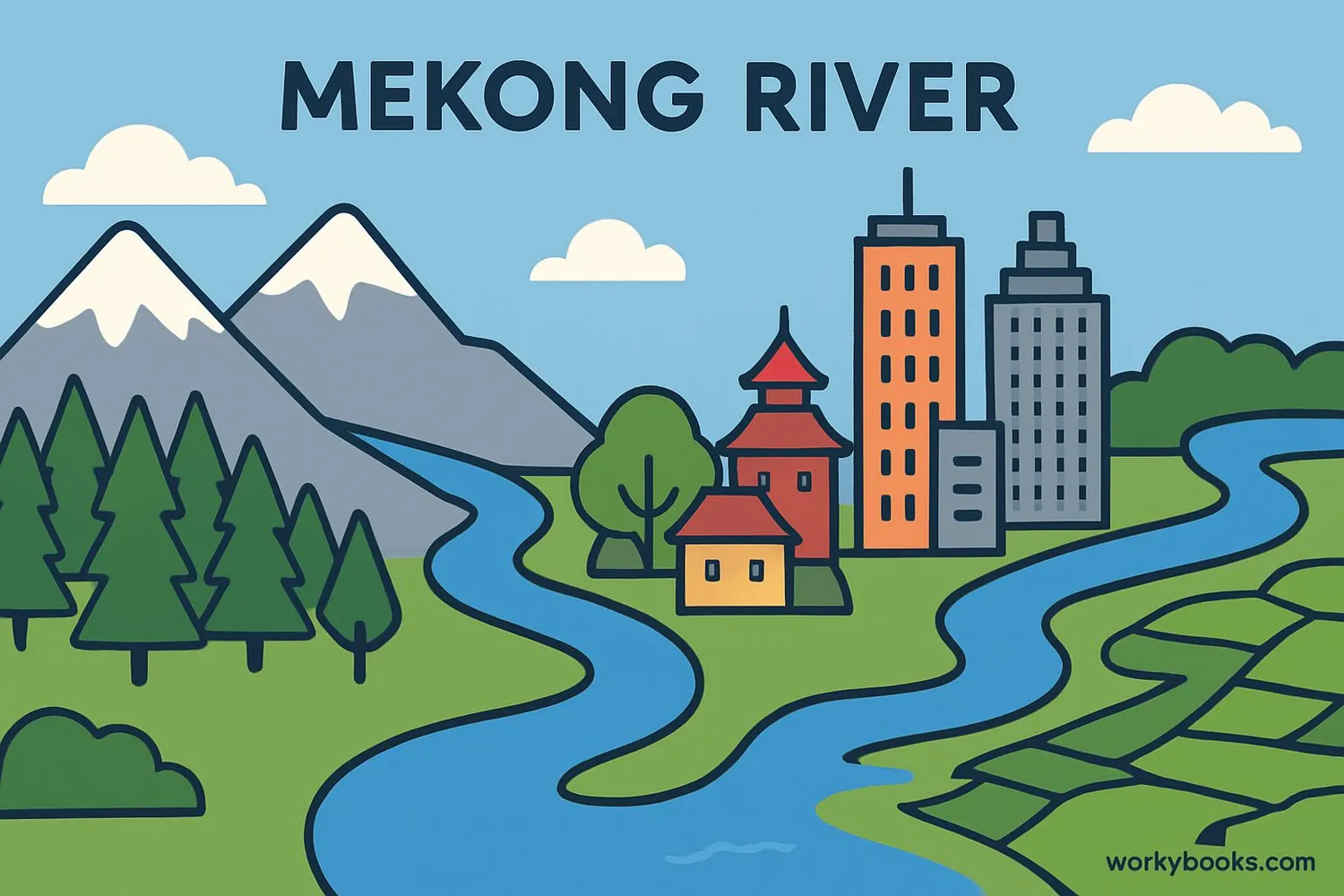
The Mekong River travels an incredible journey from its source to the sea:
Tibetan Plateau
Starts as small streams high in the Himalayas
China (Lancang)
Flows through deep gorges and valleys
Southeast Asia
Forms borders between countries
Cambodia
Floods the Tonlé Sap Lake each year
Vietnam Delta
Spreads into a vast network before reaching the sea
The river passes through six countries:
Waterfall Wonder!
In Laos, the Mekong flows over the Khone Phapheng Falls, the largest waterfall by volume in Southeast Asia!
The Mekong Delta
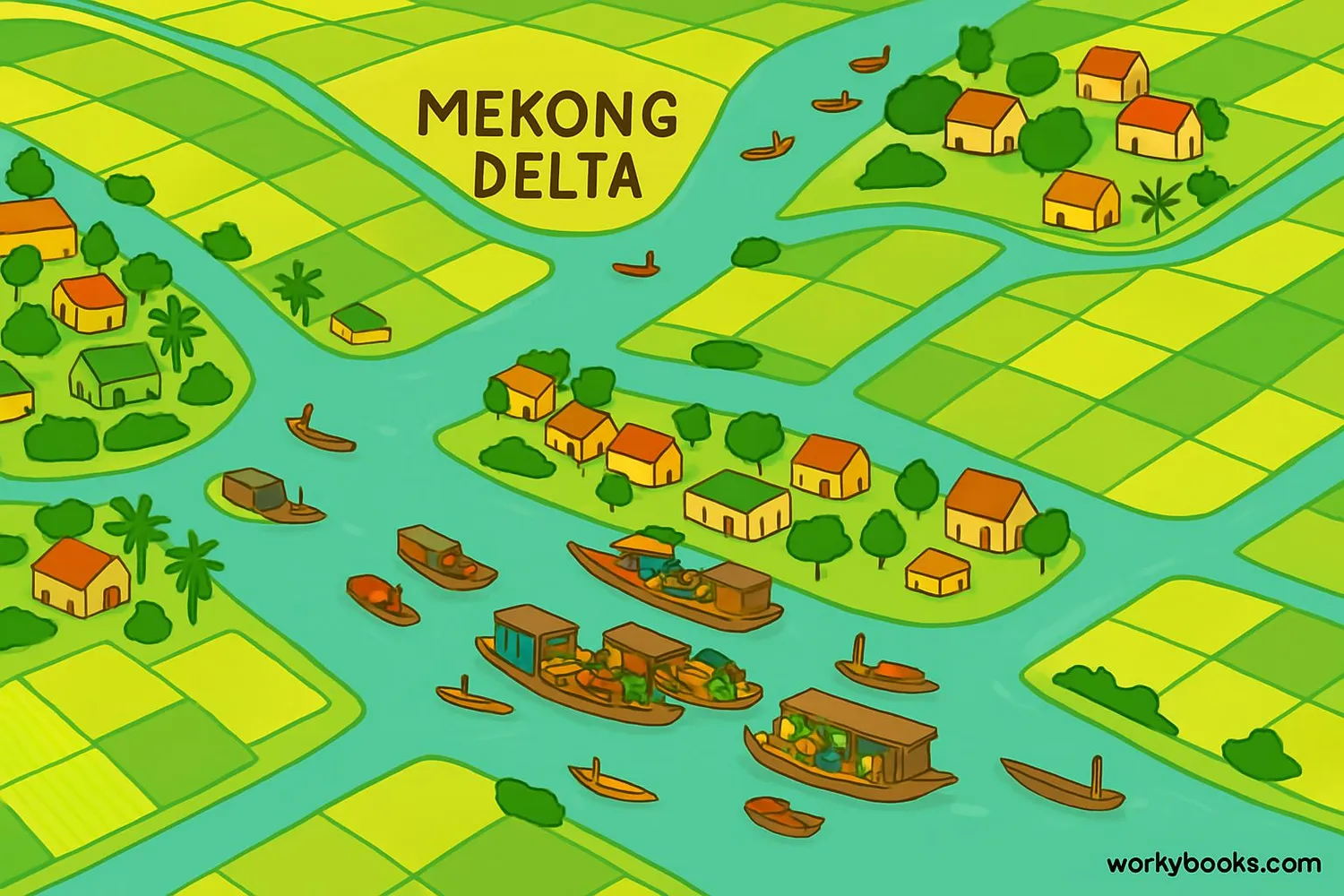
The Mekong Delta in Vietnam is where the river finally meets the sea. This special area is:
- Vast: Covers 40,500 km² (15,600 sq mi)
- Fertile: Known as Vietnam's "Rice Bowl" producing over half the country's rice
- Unique: A maze of rivers, swamps and islands
- Populated: Home to 17 million people
The Delta changes with the seasons:
Dry Season (Dec-May): Farmers grow fruits and vegetables
Wet Season (Jun-Nov): Floodwaters create ideal conditions for rice and fish
Floating Markets!
In the Delta, people shop at floating markets where boats sell fruits, vegetables, and goods directly from the water!
Biodiversity & Environment
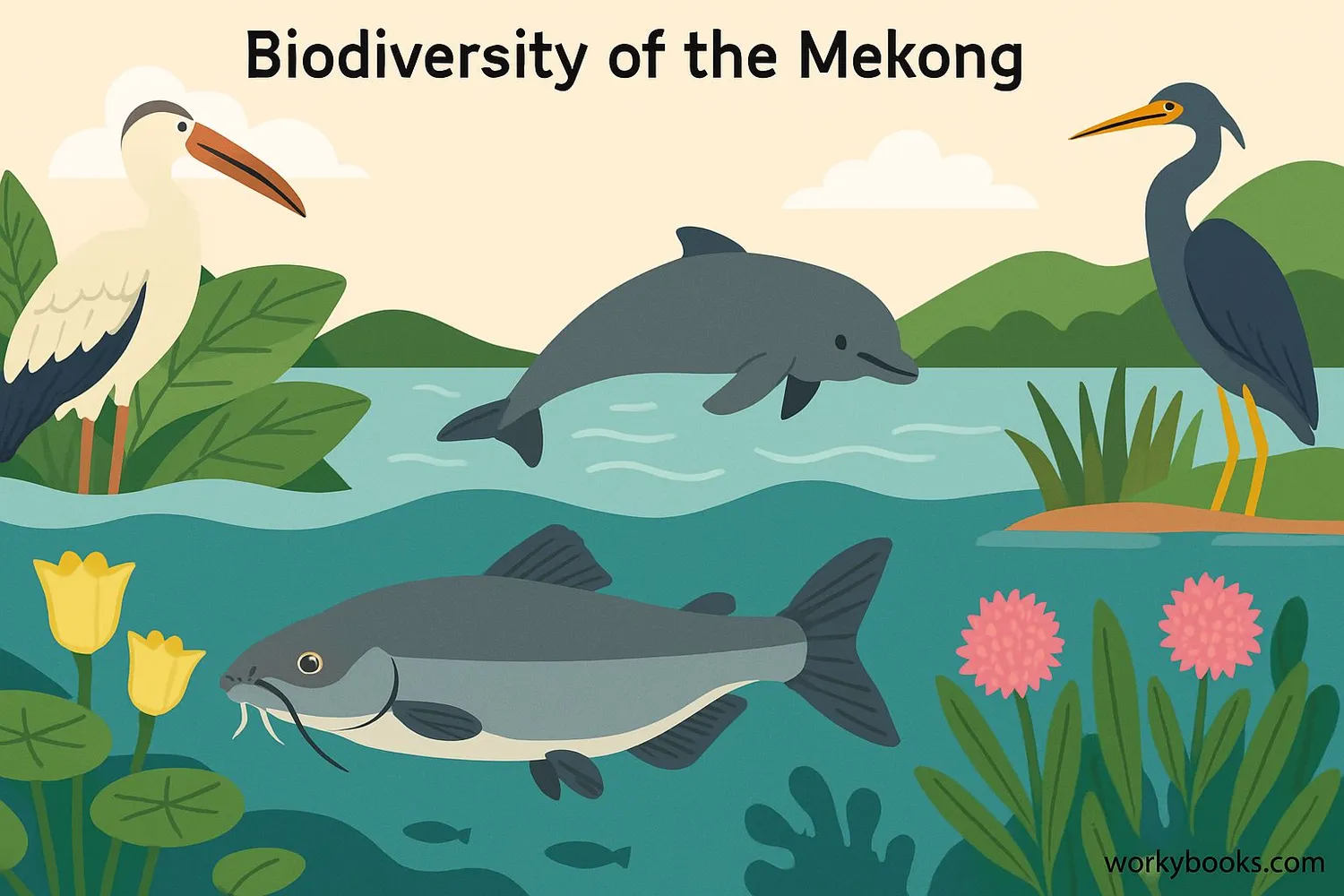
The Mekong River is one of the world's most biodiverse regions:
- Fish: Over 1,100 fish species - more than any river except the Amazon
- Mammals: Home to endangered species like Irrawaddy dolphins
- Birds: Important habitat for migratory water birds
- Plants: Unique floodplain forests and mangroves
The river faces environmental challenges:
Dams: Over 60 dams affect water flow and fish migration
Drought: Changing climate patterns cause severe droughts
Pollution: Plastic waste and agricultural runoff affect water quality
Overfishing: Declining fish populations threaten food security
Giant Fish!
The Mekong is home to the world's largest freshwater fish - the Mekong giant catfish that can grow to 3 meters (10 feet) long!
Importance to People
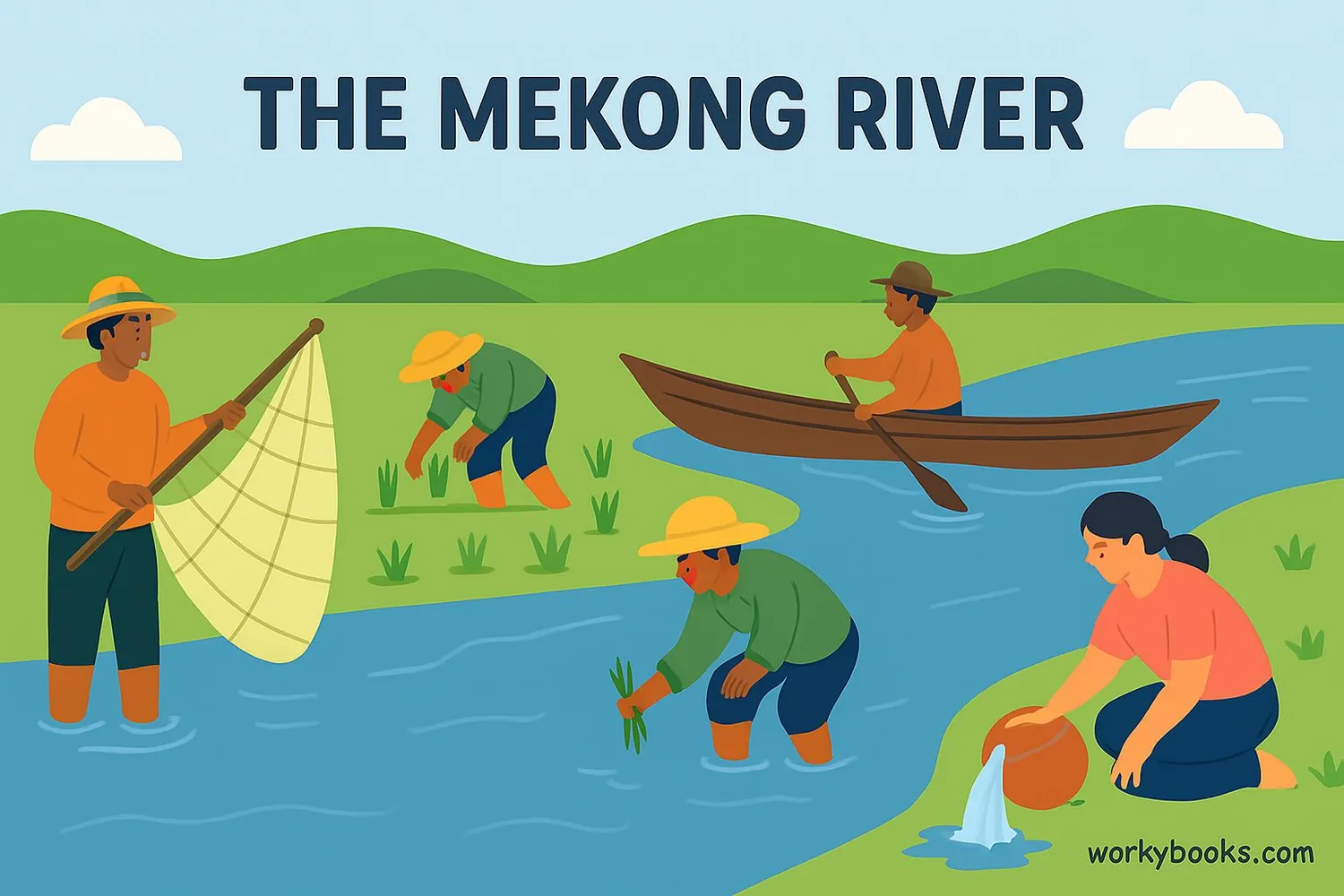
For millions of people, the Mekong River is essential for daily life:
Food Source
Provides fish for protein and nutrients
Agriculture
Irrigates rice fields and fruit orchards
Transportation
Water highway for people and goods
The Mekong River economy:
• Fisheries: Provides 2.6 million tons of fish annually
• Agriculture: Supports rice farming in Cambodia and Vietnam
• Energy: Hydropower dams generate electricity
• Tourism: Attracts visitors to river towns and natural sites
Communities along the river have developed unique cultures adapted to the river's seasonal changes, with water festivals and floating villages.
Mekong River Quiz
Test your Mekong River knowledge with this quiz! Answer all 5 questions to see how much you've learned.
Frequently Asked Questions
Here are answers to some common questions about the Mekong River:
Mekong River Trivia
Discover some amazing facts about the Mekong River!
Fish Diversity
The Mekong has more giant fish species than any other river, including the world's largest freshwater fish - the Mekong giant catfish that can weigh up to 650 pounds!
Water Volume
During the rainy season, the Mekong discharges 57,000 cubic meters of water per second into the South China Sea - that's enough to fill 22 Olympic swimming pools every second!
Growing Delta
The Mekong Delta advances 60-80 meters into the sea each year as the river deposits sediment, making it one of the fastest-growing deltas in the world!
Ancient Civilization
The Mekong River supported the Khmer Empire (9th-15th century), which built the magnificent Angkor Wat temple complex in Cambodia using water management systems connected to the river.





